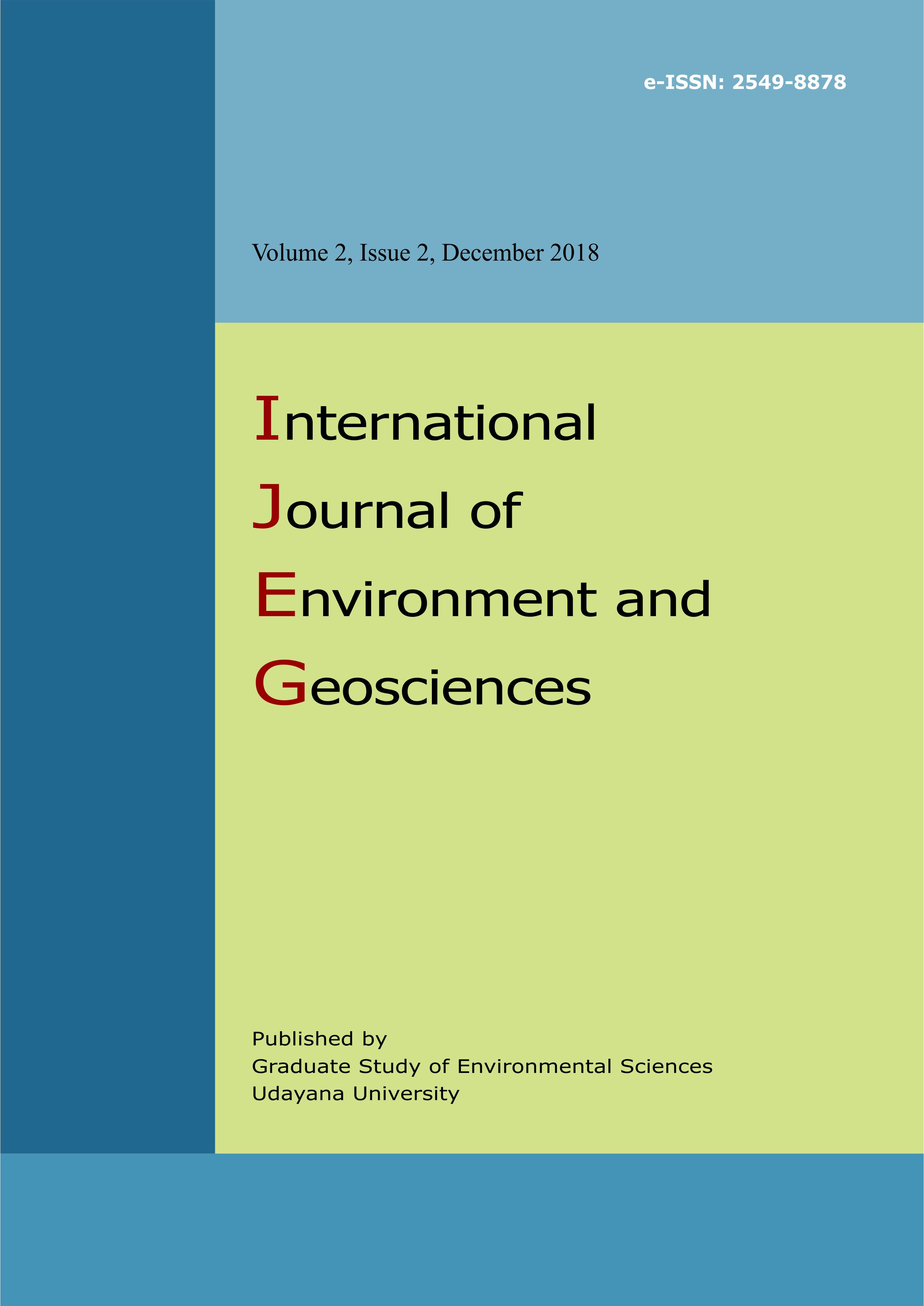Analysis Of Land Use In The Southern Part Of Bali Using Fusion Techniques
Abstract
The southern part of Bali is a central region of tourism, especially in the Sub District of North Kuta, Kuta and South Kuta. The rapid development of tourism is with increasing infrastructure development. Monitor and analyze need to the land use. In this study a fusion technique with HSV method as the combination with ALOS AVNIR-2 2008 and ALOS PRISM in 2008, to estimate of the level of accuracy of image fusion with ALOS AVNIR-2 and subsequent for the analysis of land use in southern part of Bali. Results of the accuracy test with Google Earth showed land use result fusion has high accuracy with overall accuracy of 83. 5%. Analyze of land use showed that significant decrease of moor area in Jimbaran hill, due to rapid development of infrastructure of tourism is very rapid and then extensive residential areas have increased particularly in Sub district of the North Kuta.
Downloads
Authors who publish with this journal agree to the following terms:
- All articles published by International Journal of Environment and Geosciences (IJEG) and Graduate Study of Environmental Sciences, Udayana University are made available under an open access license worldwide immediately. This means everyone has free and unlimited access to the full-text of all articles published in International Journal of Environment and Geosciences (IJEG), and everyone is free to re-use the published material given proper accreditation/citation of the original publication. Open access publication is supported by authors' institutes or research funding agency by payment of a comparatively article processing charge for accepted articles (See Author Fees). International Journal of Environment and Geosciences (IJEG) and Graduate Study of Environmental Sciences, Udayana University publish articles under the Creative Commons Attribution License.
- Authors are able to enter into separate, additional contractual arrangements for the non-exclusive distribution of the journal's published version of the work (e.g., post it to an institutional repository or publish it in a book), with an acknowledgement of its initial publication in this journal.
- Authors are permitted and encouraged to post their work online (e.g., in institutional repositories or on their website) prior to and during the submission process, as it can lead to productive exchanges, as well as earlier and greater citation of published work (See The Effect of Open Access).





